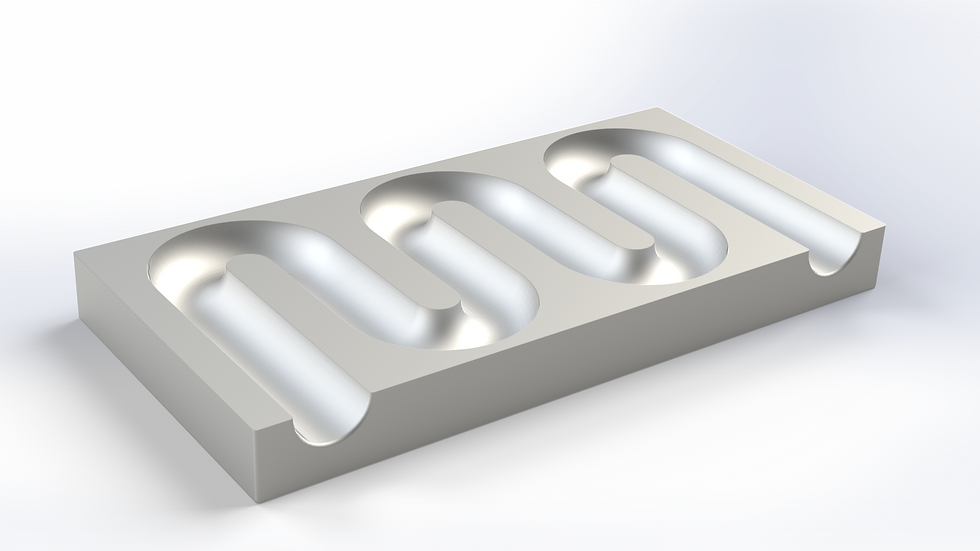Effective cooling is essential for the efficient functioning of electronic devices, which generate significant amounts of heat. One common cooling technique is cold plate cooling, which involves circulating a coolant through channels in a plate attached to the heat-generating component. While conventional cold plate cooling channels have been used for decades, they have several limitations that can affect their performance. Fortunately, advances in design optimization techniques have made it possible to create custom cold plate channels that offer significant benefits over conventional designs. In this blog post, we will discuss the flaws of conventional cold plate cooling channels and the benefits of topology-optimized custom cold plate channels.

Flaws of Conventional Cold Plate Cooling Channels
Conventional cold plate cooling channels are typically designed with simple straight or curved channels. These channels are often uniform in cross-sectional area, with the same width and depth throughout. However, this design approach can lead to several flaws that limit the effectiveness of the cooling system. For example:
Inefficient Heat Transfer: Conventional cold plate cooling channels are often poorly optimized for heat transfer. Heat transfer is maximized when there is a high surface area contact between the coolant and the heat-generating component. However, straight and curved channels have limited surface area contact, leading to inefficient heat transfer.
Limited Flow Rate: Straight and curved channels also have limited flow rates, which can result in inadequate cooling. The low flow rate can be attributed to the presence of sharp turns in the channels, which cause fluid turbulence and resistance to flow.
Non-Uniform Cooling: The simple and uniform design of conventional cold plate cooling channels also leads to non-uniform cooling. Different areas of the heat-generating component can generate different amounts of heat, but the same amount of coolant flows through all areas of the plate. This can result in some areas being over-cooled while others are under-cooled, leading to hotspots and reduced overall cooling efficiency.

Benefits of Topology-Optimized Custom Cold Plate Channels
Topology optimization is a design approach that uses advanced algorithms to create custom shapes and structures that are optimized for a specific objective, such as maximum heat transfer or minimal pressure drop. With this approach, custom cold plate channels can be designed to overcome the flaws of conventional designs and offer several benefits, including:
Enhanced Heat Transfer: Topology-optimized custom cold plate channels have highly complex and irregular shapes that increase surface area contact between the coolant and the heat-generating component. This enhances heat transfer and improves cooling efficiency.
Increased Flow Rate: Custom cold plate channels can be designed with smooth and continuous curves that reduce fluid turbulence and resistance to flow. This increases the flow rate of the coolant, allowing for more efficient cooling.
Uniform Cooling: Custom cold plate channels can also be designed to provide uniform cooling across all areas of the heat-generating component. By optimizing the channel shape and flow rate to match the heat distribution, hotspots can be eliminated, and overall cooling efficiency can be maximized.
Conclusion
Conventional cold plate cooling channels have been used for decades, but their limitations can affect the performance of the cooling system. However, with the advent of topology optimization techniques, it is possible to design custom cold plate channels that overcome these limitations and offer significant benefits. Custom cold plate channels can enhance heat transfer, increase flow rate, and provide uniform cooling across all areas of the heat-generating component. By taking advantage of topology optimization, electronic device manufacturers can improve the cooling efficiency of their products and enhance their overall performance.

Comments